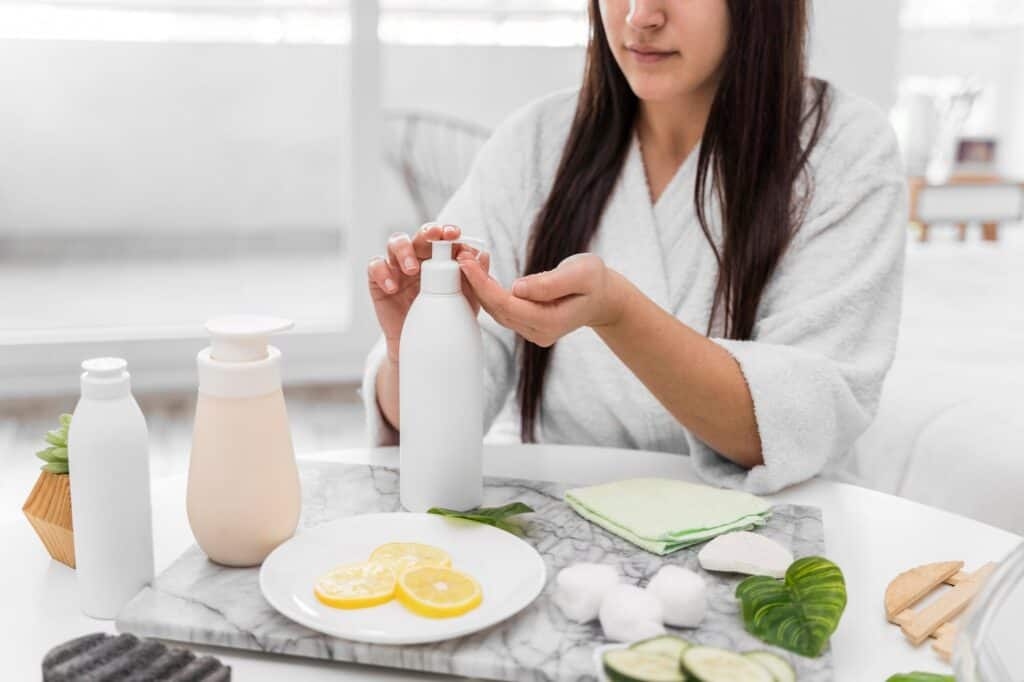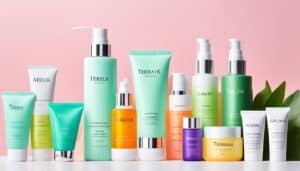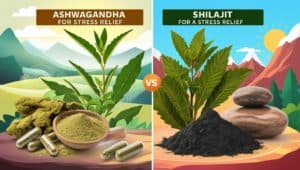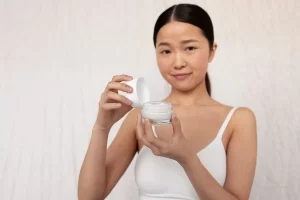
Skincare Ingredients to Avoid: What to Watch For
Navigating the world of skincare can be a minefield, with countless products boasting a myriad of ingredients.
Unfortunately, not all of these ingredients are created equal, and some can actually be harmful to your skin and overall health.
In this comprehensive guide, we’ll explore the most concerning ingredients to avoid in your skincare routine, helping you make informed decisions for healthier, safer skin.
Key Takeaways
- Understand the importance of reading labels and identifying potentially harmful ingredients like parabens, phthalates, sulfates, and formaldehyde.
- Learn about the risks associated with these common offenders and why they should be avoided in your skincare products.
- Discover natural alternatives and phthalate-free options that can provide effective and safe skincare solutions.
- Recognize the hidden dangers in fragrances, mineral oils, and alcohols, and how to steer clear of these drying delinquents.
- Stay informed about the latest trends and controversies surrounding ingredients like triclosan and microbeads.
Decoding the Labels: Understanding Ingredient Lists
Navigating the complex world of skincare can feel like deciphering a secret code, especially when it comes to understanding the ingredient lists on product labels.
However, this crucial step is essential in identifying potential ingredients to avoid in skincare products, such as parabens, phthalates, and sulfates.
Let’s dive in and uncover the hidden insights that can help you make informed decisions about the products you use.
Identifying Common Offenders
The first step in understanding ingredient lists is to familiarize yourself with the common culprits that can be detrimental to your skin’s health.
Parabens, for example, are a group of preservatives often used in cosmetics and personal care products, but they have been linked to hormone disruption and potential health concerns.
Phthalates, found in fragrances, can also disrupt the endocrine system and have been associated with reproductive issues.
Sulfates, on the other hand, are known for their harsh, drying effects, which can strip the skin of its natural oils and lead to irritation.
Reading Between the Lines
Decoding ingredient lists can be tricky, as manufacturers may use complex scientific names or unfamiliar terms to disguise potentially harmful ingredients.
It’s important to read beyond the marketing claims and scrutinize the full list of components.
Keep an eye out for ingredients that sound like they could be problematic, and don’t hesitate to research them further or consult with a dermatologist if you’re unsure.
| Ingredient | Potential Concern | Safer Alternatives |
|---|---|---|
| Parabens | Hormone disruption, potential cancer risk | Preservatives like benzoic acid, vitamin E, or essential oils |
| Phthalates | Endocrine disruption, reproductive issues | Fragrance-free products or natural essential oils |
| Sulfates | Harsh, drying effects, skin irritation | Gentle, sulfate-free cleansers and surfactants |
By understanding the common ingredients to avoid in skincare products and learning to read between the lines on ingredient lists, you can make more informed choices about the products you use and take a proactive approach to your skin’s health.
Empowering yourself with this knowledge is the first step towards a more mindful and nourishing skincare routine.
Parabens: The Controversial Preservatives
Parabens are a class of preservatives widely used in skincare and personal care products to prevent the growth of harmful bacteria and fungi.
However, these chemicals have come under intense scrutiny due to their potential endocrine-disrupting properties and potential links to certain health concerns.
In this section, we’ll explore the controversy surrounding parabens and help you understand why they are considered an ingredient to avoid.
This endocrine-disrupting potential has led to speculation that parabens may contribute to the development of certain health issues, such as breast cancer.
While the scientific evidence is still a topic of debate, many consumers prefer to err on the side of caution and avoid products containing these preservatives.
In addition to the potential health risks, parabens have also been linked to skin irritation and allergic reactions in some individuals.
This has led to a growing demand for paraben-free skincare and personal care products, as consumers seek out more natural and gentle alternatives.
When shopping for skincare products, it’s important to carefully read the ingredient lists and look out for the presence of parabens.
These preservatives may be listed under names like methylparaben, propylparaben, butylparaben, or ethylparaben.
By being an informed consumer and choosing paraben-free options, you can take an active step in reducing your exposure to these controversial ingredients.
“Avoiding parabens is a simple way to reduce your exposure to potential endocrine disruptors and support your overall health and wellbeing.”
Phthalates: The Hidden Danger in Fragrances
Phthalates, a group of pervasive chemicals, have become a subject of growing concern in the world of skincare and cosmetics.
These compounds are commonly used to add fragrance and flexibility to a wide range of consumer products, including lotions, perfumes, and even some household items.
However, the hidden danger lies in the potential health risks associated with phthalates.
Understanding the Risks
These chemicals can interfere with the body’s hormonal system, potentially leading to developmental problems, fertility issues, and even an increased risk of certain types of cancer.
The effects can be particularly concerning for pregnant women and young children, whose developing bodies are more vulnerable to the impacts of these chemicals.
Identifying Phthalate-Free Products
Navigating the world of skincare and cosmetics can be challenging, especially when it comes to identifying products that are free from phthalates.
To ensure you are making informed choices, it’s important to read product labels carefully and look for the following:
- Avoid products that list “fragrance” or “parfum” on the ingredient list, as these terms may indicate the presence of phthalates.
- Look for labels that explicitly state the product is “phthalate-free” or “fragrance-free.”
- Consider purchasing from brands that are transparent about their ingredient sourcing and manufacturing processes.
By being mindful of phthalates and seeking out phthalate-free alternatives, you can take an active step in protecting your health and well-being. Remember, knowledge is power when it comes to making informed decisions about the products we use on our skin and in our homes.
Sulfates: The Foaming Menace
Sulfates are a common ingredient found in a variety of personal care products, from shampoos and cleansers to toothpaste.
While these surfactants are known for their ability to create a rich, foaming lather, they can also be harsh on the skin, stripping away natural oils and potentially causing irritation.
As consumers become more aware of the potential drawbacks of using sulfates, it’s crucial to understand the concerns surrounding these ingredients and why they should be avoided in your skincare routine.
Sulfates, such as sodium lauryl sulfate (SLS) and sodium laureth sulfate (SLES), are effective cleansing agents that can remove dirt, oil, and impurities from the skin and hair.
However, their strong detergent properties can also disrupt the skin’s natural pH balance and compromise its protective barrier, leading to dryness, irritation, and even increased sensitivity.
- Sulfates can strip the skin of its natural oils, leading to a tight, dry, and uncomfortable feeling after use.
- They may also cause irritation, redness, and inflammation, particularly for those with sensitive skin or certain skin conditions.
- Prolonged use of sulfate-containing products can lead to long-term issues, such as eczema, dermatitis, and premature aging of the skin.
To avoid the potential drawbacks of sulfates, it’s recommended to look for sulfate-free alternatives in your skincare and haircare products.
These formulas often use gentler surfactants, such as coconut-derived cleansers, that provide a similar cleansing experience without the harsh side effects.
| Ingredient | Effect |
|---|---|
| Sodium Lauryl Sulfate (SLS) | Strong detergent that can strip the skin of natural oils and cause irritation |
| Sodium Laureth Sulfate (SLES) | Slightly less harsh than SLS, but still has the potential to disrupt the skin’s pH and barrier |
| Coconut-derived cleansers | Gentler surfactants that provide a similar cleansing experience without the drying effects |
Opting for sulfate-free formulations can help you enjoy the benefits of cleansing without the potential drawbacks associated with these foaming menaces.
Formaldehyde: The Carcinogenic Culprit
Formaldehyde is a commonly used preservative in a wide range of personal care products, from nail polish to shampoos and cosmetics.
However, this chemical has been classified as a known carcinogen, meaning it has the potential to cause cancer.
Exposure to formaldehyde can lead to various health concerns, including respiratory issues, skin irritation, and an increased risk of cancer.
Natural Alternatives to Formaldehyde
As the dangers of formaldehyde become more widely known, many consumers are seeking out natural alternatives to this harmful preservative.
Fortunately, there are several effective and safer options available:
- Vitamin E: This antioxidant possesses natural preservative properties and can help protect products from spoilage.
- Citric acid: Derived from citrus fruits, citric acid is a natural preservative that can inhibit the growth of bacteria and fungi.
- Rosemary extract: Rich in antioxidants, rosemary extract can act as a natural preservative and help extend the shelf life of personal care products.
- Grapefruit seed extract: This plant-based extract has antimicrobial properties that can help preserve the integrity of skincare and cosmetic formulations.
By opting for products that contain these natural preservatives instead of formaldehyde, consumers can enjoy the same level of protection without exposing themselves to the potentially harmful effects of this carcinogenic chemical.
| Natural Preservative | Benefits |
|---|---|
| Vitamin E | Antioxidant properties, helps prevent spoilage |
| Citric Acid | Inhibits bacterial and fungal growth |
| Rosemary Extract | Antioxidant-rich, extends product shelf life |
| Grapefruit Seed Extract | Antimicrobial, preserves product integrity |
By incorporating these natural alternatives, consumers can enjoy the benefits of effective preservation without the risks associated with formaldehyde.
ingredients to avoid in skincare products
When it comes to selecting the right skincare products, it’s crucial to be aware of the potential hazards lurking in the ingredient list.
Many common skincare ingredients can pose risks to your health and well-being, and it’s important to learn how to identify and avoid them.
In this section, we’ll dive into the most concerning ingredients to steer clear of.
Parabens: The Preservative Peril
Parabens are a class of preservatives widely used in personal care products to prevent the growth of bacteria, mold, and fungi.
However, research has linked parabens to hormone disruption and an increased risk of breast cancer.
Opt for paraben-free products whenever possible to minimize your exposure to these potentially harmful chemicals.
Phthalates: The Hidden Hazards
Phthalates are a group of chemicals often used in fragrances and plastics to improve flexibility and durability.
Studies have shown that phthalates can interfere with the endocrine system, potentially leading to reproductive and developmental issues.
Steer clear of products that list “fragrance” on the label, as this may indicate the presence of phthalates.
Sulfates: The Foaming Fiasco
Sulfates, such as sodium lauryl sulfate (SLS) and sodium laureth sulfate (SLES), are common detergents used in skincare and personal care products to create a rich, foaming lather.
However, these ingredients can be drying and irritating, particularly for those with sensitive skin. Consider opting for sulfate-free alternatives to avoid this potential pitfall.
| Ingredient | Potential Risks | Alternatives |
|---|---|---|
| Parabens | Hormone disruption, increased breast cancer risk | Paraben-free preservatives (e.g., phenoxyethanol, benzoic acid) |
| Phthalates | Endocrine disruption, reproductive and developmental issues | Fragrance-free or phthalate-free products |
| Sulfates | Drying, irritating | Sulfate-free cleansers (e.g., coconut-based surfactants) |
By familiarizing yourself with these common problematic ingredients and learning to read product labels carefully, you can make more informed choices when it comes to your skincare routine.
Prioritizing products that are free from parabens, phthalates, and sulfates can help you maintain a healthy, radiant complexion while avoiding potential health risks.
Triclosan: The Antimicrobial Adversary
The ubiquitous presence of triclosan, a common antimicrobial agent, in our personal care products has raised considerable concerns about its potential health and environmental impacts.
While this chemical is designed to combat bacteria, its widespread use has led to a growing debate about the risks associated with triclosan exposure.
Exploring Safer Alternatives
As consumers become more aware of the potential issues surrounding triclosan, there is a growing demand for safer, more natural alternatives that can provide effective antimicrobial protection without the potential downsides.
Fortunately, there are several options available that can offer effective antimicrobial properties without the use of triclosan.
- Naturally-derived antimicrobial agents, such as essential oils from plants like tea tree, lavender, or eucalyptus, have been shown to have potent antimicrobial properties without the associated risks of synthetic chemicals like triclosan.
- Probiotic-based products, which harness the power of beneficial bacteria, can help maintain a healthy skin microbiome and support the body’s natural defenses against harmful microorganisms.
- Copper-based antimicrobial agents, which leverage the natural antimicrobial properties of copper, are also emerging as a safe and effective alternative to triclosan.
By exploring these safer alternatives, consumers can make more informed choices about the personal care products they use, reducing their exposure to potential risks while still maintaining effective antimicrobial protection.
| Safer Alternatives to Triclosan | Key Benefits |
|---|---|
| Natural Essential Oils | Potent antimicrobial properties without synthetic chemicals |
| Probiotic-based Products | Supports healthy skin microbiome and natural defenses |
| Copper-based Antimicrobials | Leverages the natural antimicrobial properties of copper |
“As we become more aware of the potential risks associated with triclosan, it’s essential that we explore safer, more natural alternatives that can provide effective antimicrobial protection without the downsides.”
Fragrances: The Mysterious Irritants
Fragrances are a ubiquitous ingredient in many skincare and personal care products, adding a pleasant scent to a wide range of formulas.
However, these synthetic fragrances can be a source of skin irritation and allergic reactions for some individuals.
In this section, we’ll explore the complexities of fragrance labeling and provide guidance on how to identify and avoid potential irritants in your fragrances.
The Fragrance Conundrum
The term “fragrance” on a product label can be misleading, as it often encompasses a complex mixture of various chemical compounds.
These synthetic fragrances are formulated to create a desired scent, but they can also contain allergens and irritants that may trigger adverse reactions in sensitive skin types.
- Fragrance mixes can include hundreds of individual ingredients, many of which are not disclosed on the label.
- Common fragrance allergens include limonene, linalool, and benzyl alcohol, among others.
- People with sensitive skin or existing skin conditions, such as eczema or rosacea, may be more prone to irritation from fragrances.
Identifying Fragrance-Free Alternatives
To avoid potential skin irritation from fragrances, it’s essential to read product labels carefully and look for “fragrance-free” or “unscented” claims.
However, even these terms can be misleading, as some products may still contain masking fragrances to cover up natural scents.
| Product Type | Fragrance-Free Alternative |
|---|---|
| Moisturizer | Cetaphil Daily Facial Moisturizer |
| Cleanser | CeraVe Hydrating Facial Cleanser |
| Sunscreen | EltaMD UV Clear Broad-Spectrum SPF 46 |
By carefully selecting fragrance-free products and being mindful of potential irritants, you can minimize the risk of skin reactions and maintain a healthy, radiant complexion.
“Fragrances can be a source of skin irritation for many people, so it’s important to read labels and choose products that are specifically labeled as fragrance-free.”
Mineral Oils: The Pore-Clogging Offenders
Mineral oils, a common ingredient in many skincare and personal care products, have come under scrutiny for their potential to clog pores and contribute to various skin concerns.
These petroleum-derived oils, often used as lubricants or emollients, have been the subject of ongoing debates within the beauty industry.
Choosing Non-Comedogenic Options
As consumers become more aware of the potential drawbacks of mineral oils, the demand for non-comedogenic (non-pore-clogging) alternatives has grown.
Fortunately, there are several options available that can provide the desired moisturizing and smoothing effects without the risk of clogging pores.
- Plant-based oils, such as jojoba oil, argan oil, and rosehip seed oil, are often considered non-comedogenic and can offer nourishing benefits for the skin.
- Silicone-based ingredients, like dimethicone and cyclomethicone, can provide a lightweight, non-greasy feel without clogging pores.
- Synthetic esters, like isopropyl myristate and isohexadecane, can mimic the emollient properties of mineral oils while being less likely to cause pore blockage.
When selecting skincare products, it’s important to carefully review the ingredient list and opt for formulations that are labeled as “non-comedogenic” or “non-acnegenic.”
This can help ensure that the products you choose won’t contribute to the formation of blackheads, whiteheads, or other blemishes.
| Ingredient | Comedogenic Rating | Potential Pore-Clogging Concerns |
|---|---|---|
| Mineral Oil | 4-5 | Highly comedogenic, can clog pores and contribute to acne |
| Jojoba Oil | 2 | Low comedogenic potential, suitable for most skin types |
| Dimethicone | 0-2 | Non-comedogenic, can provide a smooth, silky finish without clogging pores |
| Isopropyl Myristate | 3-4 | Moderate comedogenic potential, may clog pores in some individuals |
“Choosing the right skincare products that are non-comedogenic is crucial for maintaining clear, healthy skin. By avoiding mineral oils and opting for alternative ingredients, you can keep your pores unclogged and your complexion glowing.”
Alcohols: The Drying Delinquents
Alcohols are a common ingredient found in a wide range of skincare products, often used as preservatives, solvents, or to enhance the texture and feel of the formula.
However, not all alcohols are created equal, and some can be particularly drying and irritating to the skin, stripping away natural oils and compromising the skin’s protective barrier.
In this section, we’ll explore the different types of alcohols used in skincare and provide guidance on how to identify and avoid the most problematic ones in your routine.
Identifying Problematic Alcohols
While some alcohols, like fatty alcohols (e.g., cetyl alcohol, stearyl alcohol), are generally considered safe and even beneficial for the skin, other types can be quite drying and irritating.
Some of the alcohols to watch out for include:
- Denatured alcohol (also known as ethanol or SD alcohol)
- Isopropyl alcohol (or isopropanol)
- Methyl alcohol (or methanol)
These alcohols can strip the skin of its natural oils, leading to dryness, flakiness, and even increased sensitivity.
They’re often found in toners, astringents, and some cleansers, so be sure to check the ingredient lists carefully.
Alternatives to Drying Alcohols
Fortunately, there are many alcohol-free alternatives that can provide the same benefits without the drying effects.
Look for products that contain hydrating and nourishing ingredients, such as:
- Glycerin
- Hyaluronic acid
- Aloe vera
- Fatty alcohols (e.g., cetyl alcohol, stearyl alcohol)
By carefully selecting alcohol-free skincare products, you can maintain a healthy, hydrated complexion without the risk of irritation or dryness.
| Alcohol Type | Effect on Skin | Recommended Alternative |
|---|---|---|
| Denatured Alcohol | Highly drying and irritating | Glycerin, Hyaluronic Acid |
| Isopropyl Alcohol | Drying and can disrupt the skin’s barrier | Aloe Vera, Fatty Alcohols |
| Methyl Alcohol | Potentially toxic and drying | Avoid and opt for gentler ingredients |
“Alcohols can be a tricky ingredient in skincare, as not all of them are created equal. It’s important to understand the different types and their potential effects on the skin.”
By being mindful of the alcohols in your skincare products and choosing gentle, hydrating alternatives, you can maintain a healthy, balanced complexion and avoid the drying pitfalls of problematic alcohols.
Conclusion
In conclusion, navigating the complex world of skincare ingredients can be a daunting task, but by understanding the potential dangers and learning to identify the most concerning ingredients, you can make informed decisions to support your skin’s health and well-being.
By avoiding the ingredients we’ve explored in this guide, such as parabens, phthalates, sulfates, formaldehyde, triclosan, fragrances, mineral oils, and certain alcohols, you can create a safer, more effective skincare routine that nourishes and protects your skin.
Remember, your skin is your largest organ, and what you put on it can have a significant impact on your overall health.
Take the time to read labels, research ingredients, and choose products that align with your values and skin care needs.
With a little knowledge and diligence, you can navigate the complexities of skincare ingredients and make choices that support your skin’s health and your overall well-being.
By staying informed and making conscious decisions about the products you use, you can take an active role in maintaining a healthy, radiant complexion.
Remember, your skin deserves the best, so be sure to choose wisely and prioritize your skin’s health as you build a skincare routine that works for you.






